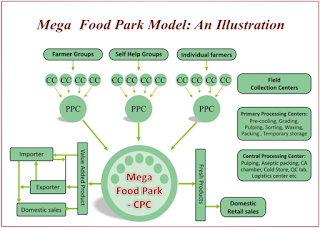APMC Acts Reforms -Doubling Farmer's Income. कृषि बाजार व्यवस्था के बदलाव
APMC
Acts Reforms -Doubling Farmer's Income.
कृषि बाजार व्यवस्था के बदलाव
Among
the reforms proposed under the model APLM Act are: allowing the setting up of
private markets; direct sale of produce by farmers to bulk buyers; and capping
market fees and commission charges payable by farmers However, regulated
markets had some drawbacks such as: Under this regulation, no exporter or
processor could buy directly from farmers. It discouraged processing and
exporting of agricultural products. Under the act, the state Government could
only set up markets, thus preventing private players from setting up markets
and investing in marketing infrastructure. Formation of cartels with links to
caste and political networks resulting in price variations.
An increased number
of middlemen formed a virtual barrier between the farmer and the consumer. The
licensing of commission agents in the state regulated markets has led to the
monopoly of the licensed traders acting as a major entry barrier for new
entrepreneurs. The fragmentation of markets within the State hinders the free
flow of agro- commodities from one market area to another and multiple handling
of agri-produce and multiple levels of mandi charges end up escalating the
prices for the consumers without commensurate benefit to the farmer.
Consequently, the inter-ministerial task force on agricultural marketing
reforms (2002) recommended the APMC Act be amended to allow for direct
marketing and the establishment of agricultural markets by the private and
co-operative sector to provide more efficient marketing and creating an
environment conducive to private investment. In response, the Union Ministry of
Agriculture proposed a model act on agricultural marketing in consultation with
State governments for adoption by the States. (Here, you should note that
agriculture is a state subject and hence Central government can only give
guidelines. It is within the powers of state Model APMC Act 2003 – Salient
features: As per the act, the State is divided into several market areas, each
of which is administered by a separate Agricultural Produce Market Committee
(APMC) which impose its own marketing regulation (including fees). Apart from
that, legal persons, growers, and local authorities are permitted to apply for
the establishment of new markets for agricultural produce in any area. There
will be no compulsion on the growers to sell their produce through existing
markets administered by the Agricultural Produce Market Committee (APMC).
Separate provision is made for notification of ‘Special Markets’ in any market
area for specified agricultural commodities. Provision for Contract Farming,
allowing direct sale of farm produce to contract farming sponsor from farmer’s
field. Single point levy of market fee on the sale of notified agricultural commodities
in any market area.
Manmath Biradar
manmathbiradar@gmail.com
Below
are the links-
Instagram: https://www.instagram.com/manmath.biradar/
Twitter: https://twitter.com/BiradarManmath
The
NAM Portal provides a single window service,
NAM
is a “virtual” market but it has a physical market (mandi),
The
model APMC act,Doubling Farmer's Income,APMC Acts Reforms 2017.,





Comments
Post a Comment